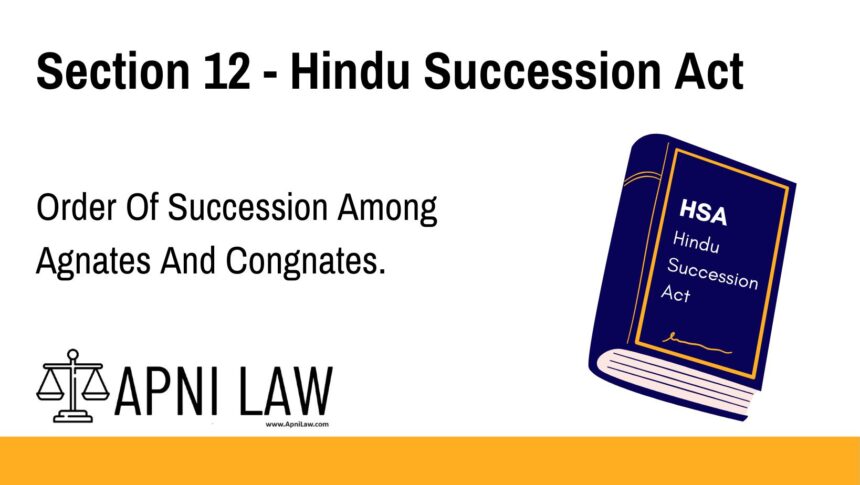Code: Section 12 – Hindu Succession Act
12. The order of succession among agnates or cognates, as the case may be, shall be determined in accordance with the rules of preference laid down hereunder:
Rule 1: Of two heirs, the one who has fewer or no degrees of ascent is preferred.
Rule 2: Where the number of degrees of ascent is the same or none, that heir is preferred who has fewer or **no degrees of descent.
Rule 3: Where neither heir is entitled to be preferred to the other under Rule 1 or Rule 2, they take simultaneously.
Explanation of Section 12 – Hindu Succession Act
Section 12 of the Hindu Succession Act lays down the rules for the order of succession when it comes to agnates (relatives through the male line) and cognates (relatives through the female line). This section is crucial in determining which relatives are entitled to inherit the property of a deceased person in the absence of the more immediate heirs.
Key Provisions:
- Agnates are people who are related to the deceased solely through male ancestors.
- Cognates are people who are related to the deceased through both male and female ancestors.
- The rules are intended to prioritize closer blood relations and those with fewer degrees of ascent or descent.
Order of Succession Rules:
- Rule 1: If there are two potential heirs, the one who is further down the family tree (i.e., fewer degrees of ascent) is preferred.
- Rule 2: If the heirs have the same number of degrees of ascent or if there are no degrees of ascent, then the heir with fewer degrees of descent (i.e., closer in the descending line) is preferred.
- Rule 3: If neither heir can be preferred based on the above rules, the heirs will take the property simultaneously, meaning they will inherit in equal shares.
Illustration
Example 1:
If a deceased person has two brothers, and one brother is the son of the deceased’s father (i.e., a closer relative), while the other is the son of the deceased’s uncle (i.e., a more distant relative), the brother who is the son of the deceased’s father would be preferred as the heir under Rule 1.
Example 2:
If two potential heirs are cousins, one of whom is the son of the deceased’s brother, and the other is the son of the deceased’s sister, and both have the same number of degrees of ascent, the heir with fewer degrees of descent (i.e., the son of the deceased’s brother) would be preferred under Rule 2.
Common Questions and Answers on Section 12 – Hindu Succession Act
1. What are agnates and cognates?
- Answer: Agnates are relatives connected through the male line, while cognates are relatives connected through both male and female lines.
2. How is the order of succession determined under Section 12?
- Answer: The order of succession is determined by the number of degrees of ascent and descent among the heirs. The heir with fewer degrees of ascent or descent is preferred.
3. What happens if two heirs have the same degrees of ascent and descent?
- Answer: If neither heir can be preferred based on Rule 1 or Rule 2, the two heirs will inherit simultaneously, meaning they will divide the property equally.
Conclusion
Section 12 of the Hindu Succession Act establishes a clear set of rules for determining the order of succession among agnates and cognates. By giving preference to those with fewer degrees of ascent or descent, this section ensures that the closest blood relatives inherit the deceased’s property, thereby promoting fairness and clarity in inheritance matters.








